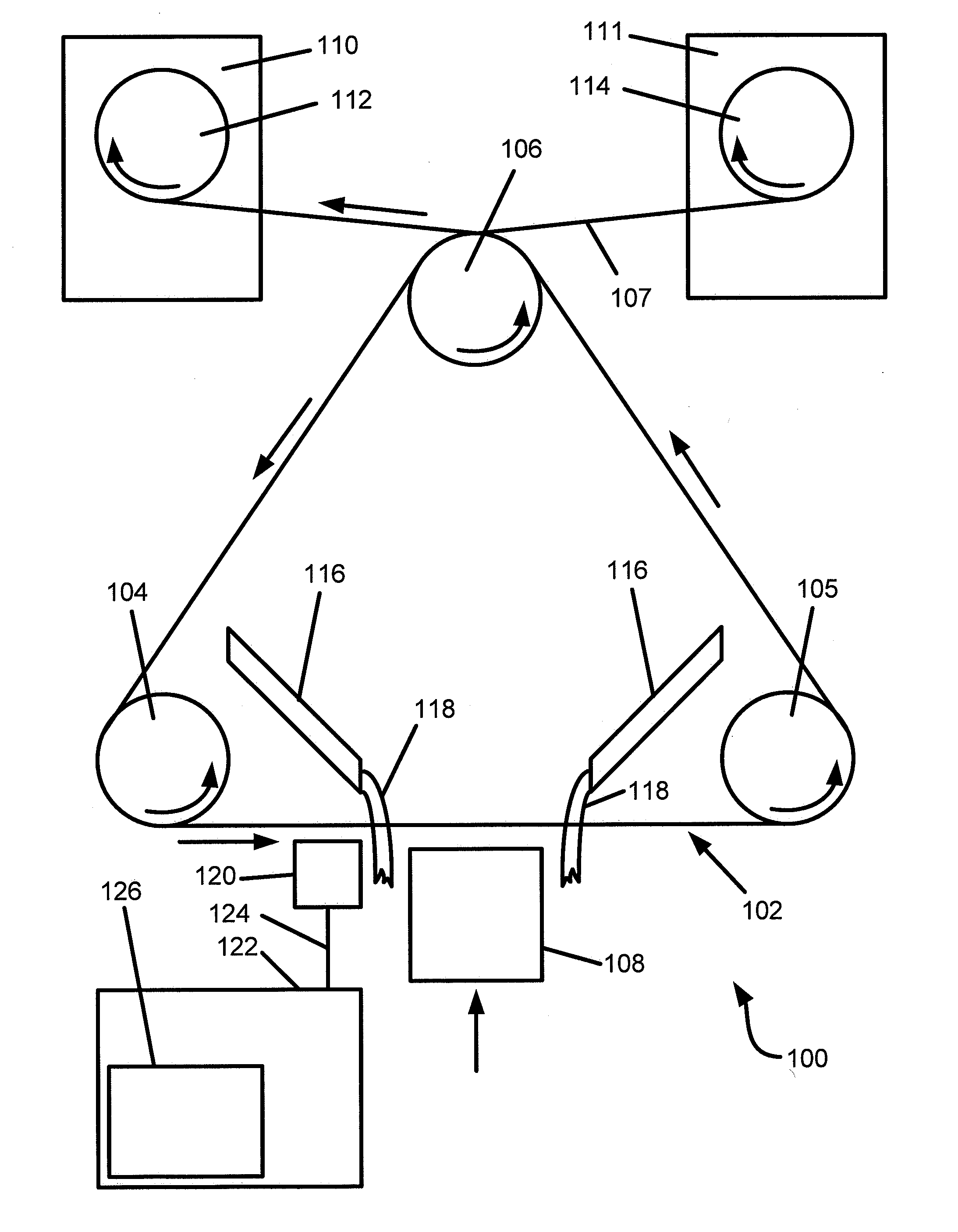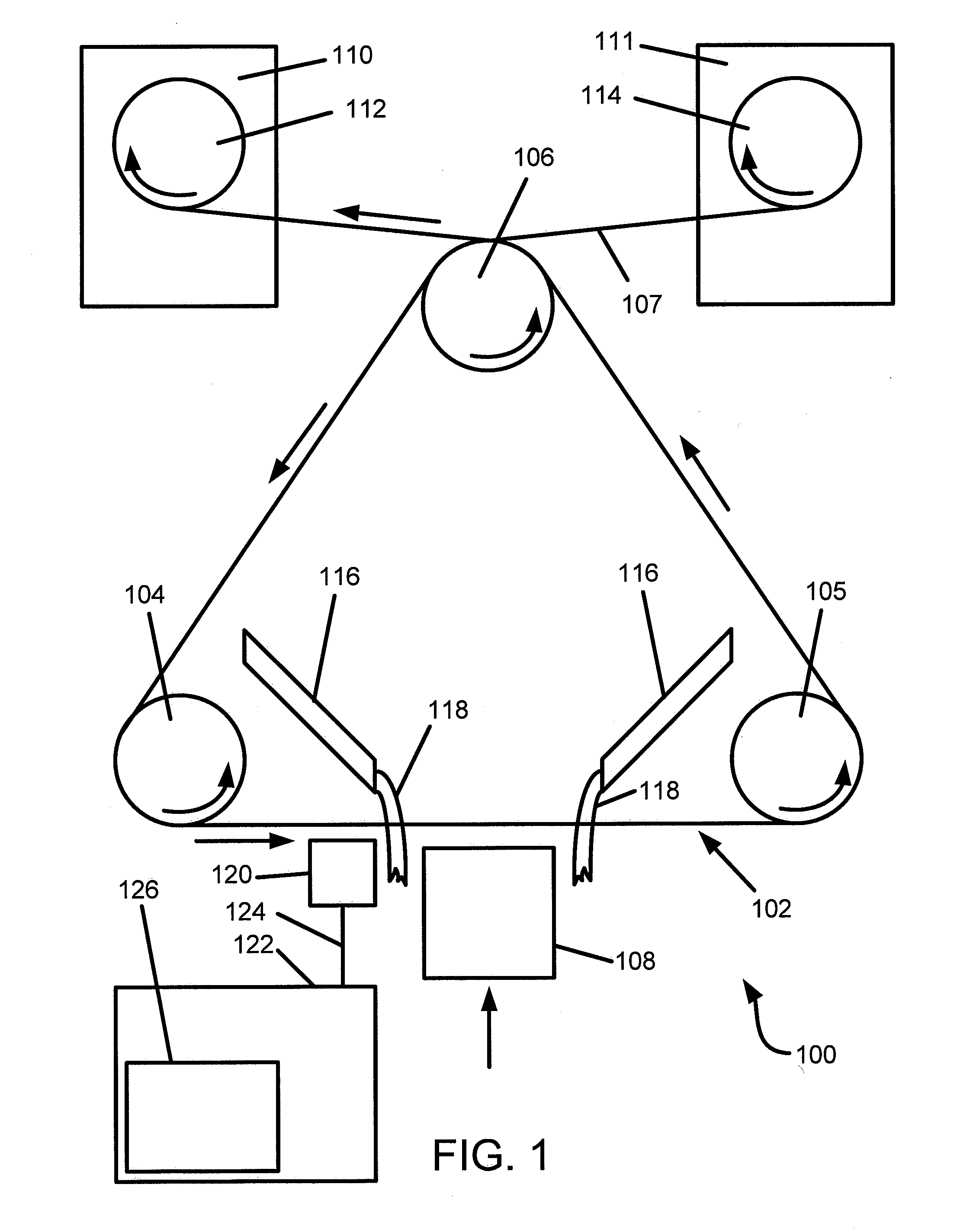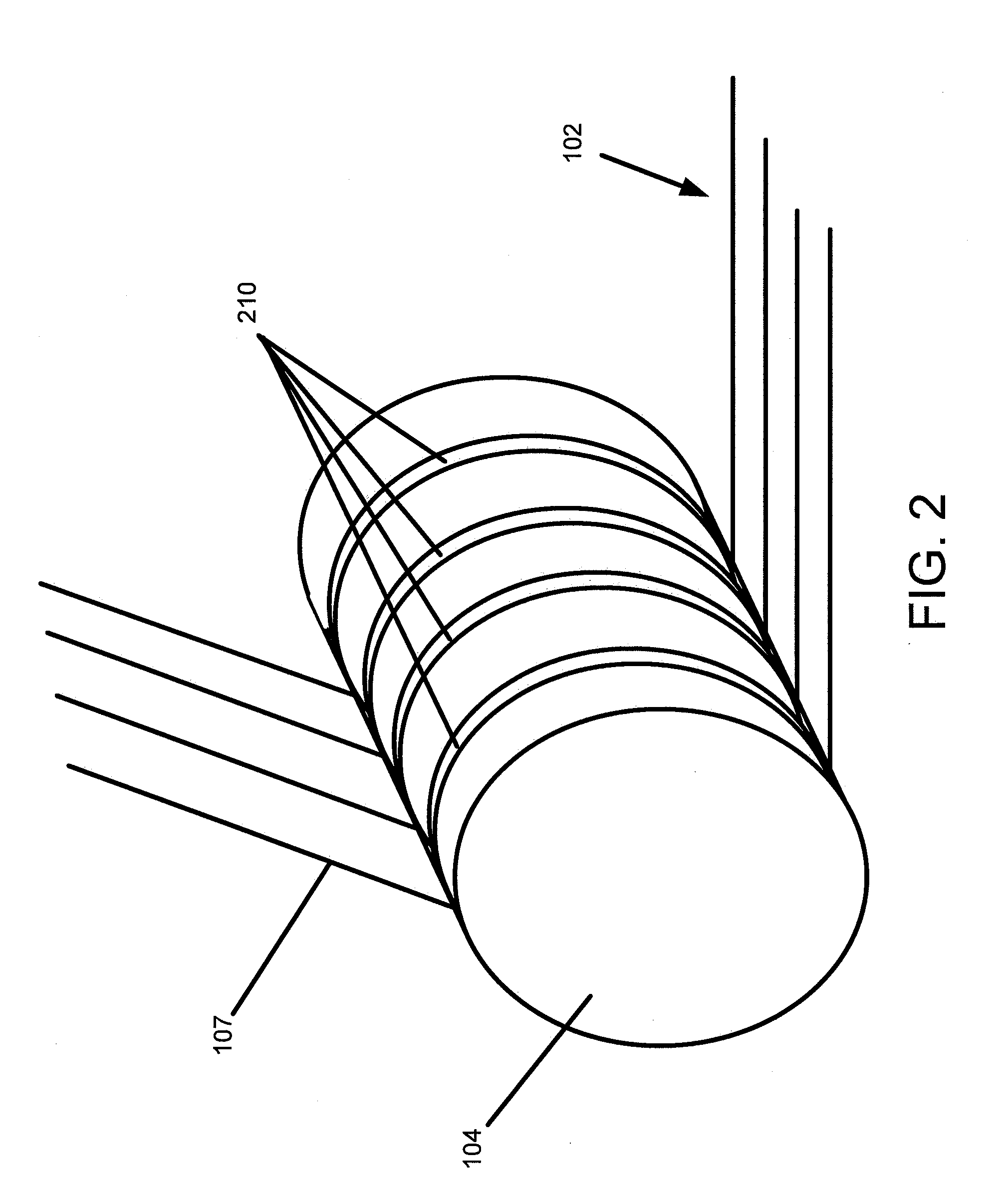Multi-wire wafer cutting apparatus and method
- Summary
- Abstract
- Description
- Claims
- Application Information
AI Technical Summary
Benefits of technology
Problems solved by technology
Method used
Image
Examples
Embodiment Construction
[0034]FIG. 1 is a simplified schematic of an exemplary embodiment of a wafer cutting apparatus 100 in accordance with the present disclosure. The apparatus 100 is configured to simultaneously cut a plurality of wafers from an ingot, block or brick 108 of semiconductor material such as silicon particularly for use in photovoltaic cell applications. The term “ingot” will be used in the description below for the sake of simplicity of explanation and not by way of limitation.
[0035]The wafer cutting apparatus 100 includes two or more (in this example, three) rotatable wire guides 104, 105, and 106 rotatably mounted on a conventional multi-wire saw frame (not shown for simplicity of explanation). Wrapped around and spanning the first, second, and third rotatable wire guides 104, 105, and 106 many times is a cutting wire 107. The cutting wire 107 in this exemplary embodiment is impregnated with a plurality of cutting particles (e.g., diamond or silicon carbide, to name a few). The portions...
PUM
| Property | Measurement | Unit |
|---|---|---|
| Length | aaaaa | aaaaa |
| Length | aaaaa | aaaaa |
| Length | aaaaa | aaaaa |
Abstract
Description
Claims
Application Information
 Login to View More
Login to View More - R&D
- Intellectual Property
- Life Sciences
- Materials
- Tech Scout
- Unparalleled Data Quality
- Higher Quality Content
- 60% Fewer Hallucinations
Browse by: Latest US Patents, China's latest patents, Technical Efficacy Thesaurus, Application Domain, Technology Topic, Popular Technical Reports.
© 2025 PatSnap. All rights reserved.Legal|Privacy policy|Modern Slavery Act Transparency Statement|Sitemap|About US| Contact US: help@patsnap.com



